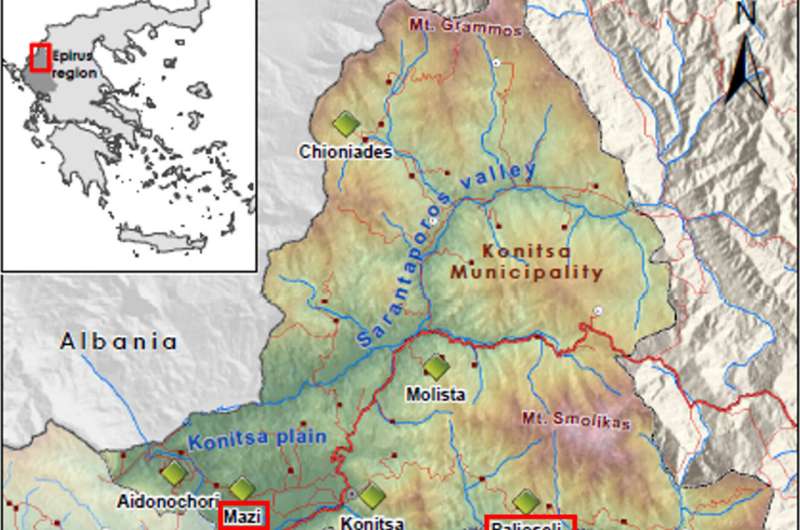This article has been reviewed according to Science X's editorial process and policies. Editors have highlighted the following attributes while ensuring the content's credibility:
fact-checked
peer-reviewed publication
trusted source
proofread
Sacred forests are resilient and show capacity for recovery and expansion, Greece study finds

New research has shown that the special status of sacred forests also gives them important ecological characteristics, in particular a high resilience that enables them to recover after periods when they were damaged and degraded.
The sacred status of these forests in Epirus, northwestern Greece, is conferred due to their association with the Greek Orthodox Church. Many of the forests have a church building or other religious feature at their cultural core and have been protected from exploitation down the generations by strict prohibitions enforced through the spiritual beliefs of local people and the continuation of sacred rituals.
The history of Epirus over the past 400 years has been marked by huge societal changes during the era of the Ottoman Empire, Greek independence and then the impact of two world wars. Human populations in this rural area have gone through large fluctuations from periods of intensive land use and pressure on forest resources, to depopulation that allowed recovery of forests by natural regeneration.
The research by the University of Ioannina, University of Bologna, Bangor University and the Forestry Service of Ioannina, published in People and Nature, has shown that throughout this history the sacred forests have remained a constant natural feature in the landscape.
Taking wood cores from the trees in five of these forests and measuring their growth rings has shown big fluctuations in the rate at which new trees have established since the oldest measured tree, which was dated to 1621. A peak in the emergence of new trees was found during periods when human populations were low. There was also good evidence to show that the mature trees of the sacred forests acted as a nucleus from which seeds dispersed enabling new trees to establish and expand the forest cover out into the landscape.
Lead researcher Dr. Valentino Marini Govigli of the University of Bologna said, "These results have important implications for such sacred natural sites, which can be considered as 'socio-ecological systems,' with their natural and human elements intertwined. Their strong cultural status has been vital for their survival during periods of huge turmoil, and their capacity to reseed forest recovery across the landscape when reduction in human pressures has allowed, which has been crucial for their resilience."
Research team member John Healey, Professor of Forest Sciences at Bangor University, said, "From our results, we have been able to propose practical actions to ensure that sacred forests can adapt to significant social changes. Important components are raising public awareness to promote cultural vitality, and active forest management such as clearing flammable shrubs from border areas and periodic light grazing to maintain the identity of individual sacred natural sites within the landscape.
"This international collaboration illustrates the importance of linking new discoveries about the cultural value and ecological dynamics of forests to practical recommendations for their conservation, thus ensuring that they continue to play a vital role for future generations, which is central to the research and teaching of forestry at Bangor University."
Post-doctoral researcher Dr. Kalliopi Stara of the University of Ioannina said, "Since 2015 the sacred forests of the region's villages have been listed in the index of Intangible Cultural Heritage of Greece, and they are key components of the Zagori Cultural Landscape that was added to the UNESCO list of world heritage sites in 2023."
The leader of the project Professor John Halley of the University of Ioannina said, "Given the high status now afforded to these Sacred Natural Sites there has been a major increase in interest among our students and the general public, which our Laboratory of Ecology has met through cultural ecology field courses and many public engagement events."
Dr. Rigas Tsiakiris from the Forestry Service of Ioannina said, "The results of this research are very valuable for the Forestry Service to inform our implementation of the management required to protect these valuable forests."
More information: Valentino Marini Govigli et al, Exploring spatial and temporal resilience in socio‐ecological systems: Evidence from sacred forests in Epirus, Greece, People and Nature (2024). DOI: 10.1002/pan3.10624
Journal information: People and Nature
Provided by Bangor University




















